Last Wednesday, Sean Riley and I had a small but dedicated group of birders join us for a visit to Plum Island. Two Peregrine Falcons roosting on the Seabrook nuclear plant siren near the bridge got us out of the vans to start birding. Both were banded adults, though we did not confirm if they were the pair that nests on the Route 1 bridge in town.
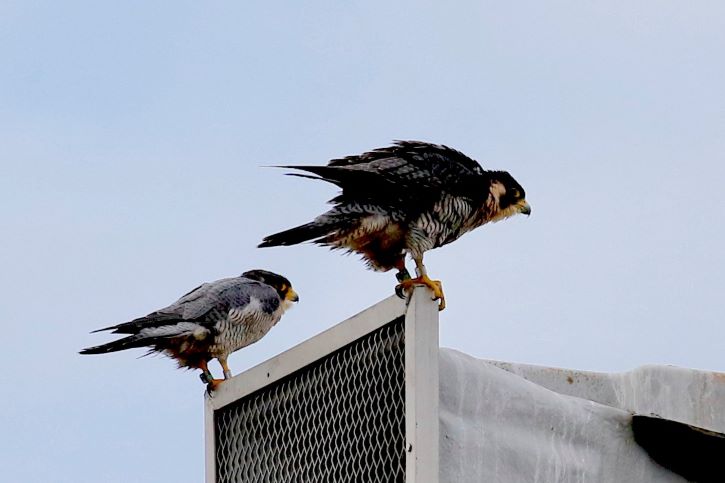
The next cool thing that happened was to run into a crowd of shorebirds along the road in the Main Panne. This high tide roost has been very reliable ever since the impoundments that had offered such roosts during the late summer migration of shorebirds were filled for the impending waterfowl migration. These late migrants and/or wintering birds were a pretty even mix of Dunlin and Semipalmated Plovers, with a few Semipalmated Sandpipers and a nice number of White-rumped Sandpipers. Then we fell in the trap that many birders on Plum Island have landed in this fall, calling a first-year White-rumped Sandpiper a Western Sandpiper, which I reported on Massbird before we could look carefully at photos of the bird.

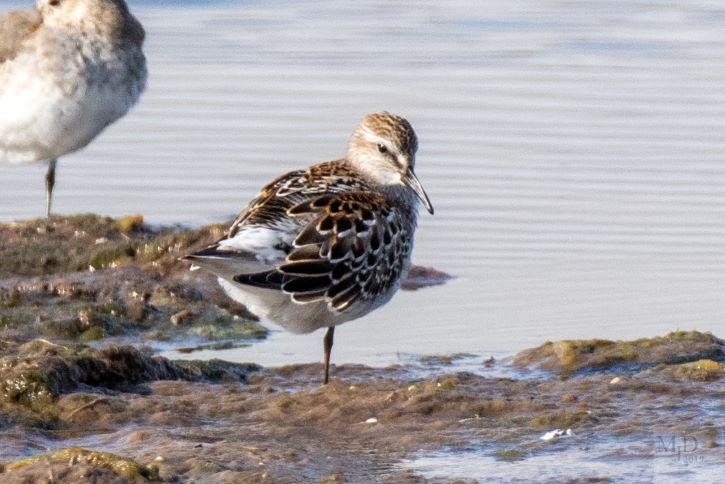

See for yourself; it is rare to get good looks at the pure white rump when the bird is standing, but this young one was preening a great deal, and we have many definitive views. The fresh plumage of the young White-rumped Sandpiper can “easily be confused with a Western” (thanks for that Marshall Iliff!). If these young birds tend to show up much later in the migration, we would not have seen them as closely as we are now when they were out on Bill Forward Pool or other more distant sites. Now we are right up on them, and got dazzled by all that rusty-looking plumage. Ain’t learning wonderful? Tom Wetmore reports that he thinks that all of the many Western Sandpipers reported there this fall were really White-rumps!
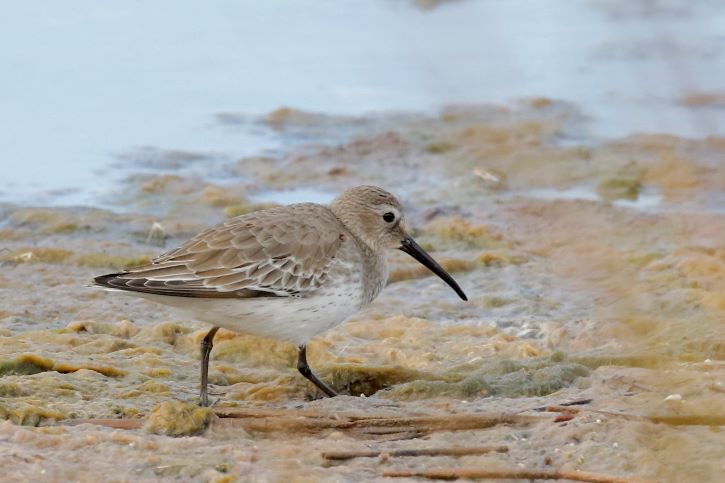
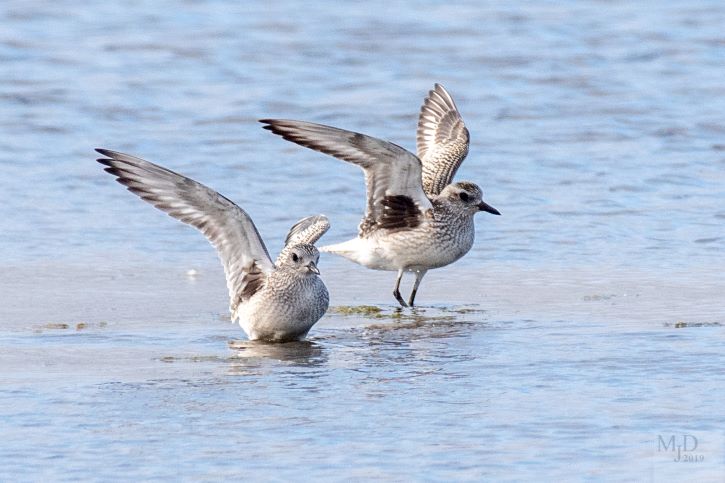
After a good time with the shorebirds, we stopped briefly at the Wardens, hoping in vain to finally encounter the sparrows that we have missed this fall. While some went in search of them, Paul Sullivan and I lingered to look at a couple of Yellow-rumped Warblers that were calling near the road, when a Nashville Warbler popped up very briefly. It was nowhere to be found when the group returned, sadly.
We went to Emerson Rocks, where the sea was again full of newly arrived scoters and eiders. This week we did not spot any Surf Scoters, but the sea was rough, so we may have missed some. Big flocks of both of the other two flew in all directions and rested on the water, giving the impression that they are happy to be here, at least for now. Lots of Northern Gannets flew by and foraged a ways north of parking lot # 7, and a couple of Common Loons foraged near the rocks.
At Hellcat, we were waved eagerly to the t-intersection of the dike by Dave Adrien, who wanted us to look at the beautiful American Bittern there. We then gazed lovingly at it for a long while. The bird was tucked between some cattails right at the bottom of the dike in North Pool, and performed on and on, even eating a large fish for our viewing pleasure. There were lots of ducks, including Northern Pintails, American Black Ducks, Mallards, and many more Green-winged Teal way down Bill Forward Pool.
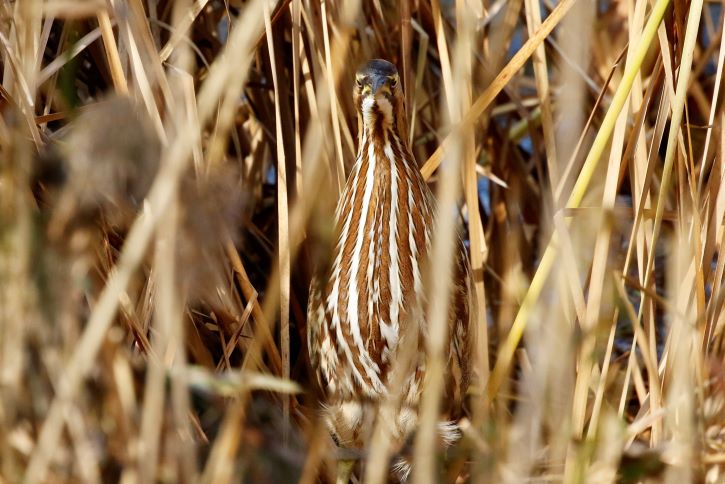
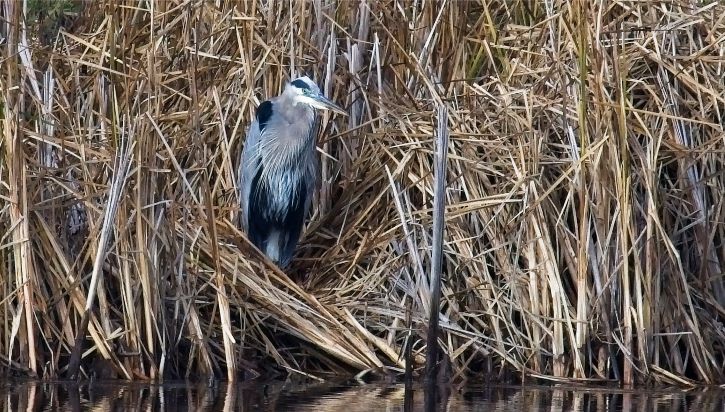

We are also in the middle of the big push south for Double-crested Cormorants. Last week there were some big flocks, and this week they are still putting on a show on the water and in the air at Joppa Flats. As much as I tease about their slumped posture and ragged formations, it is inspiring to see so much birdlife on the water at our site. Given the news we are reading about bird populations, any show of force is an upper, maybe even including some species we have tended to malign.
Our list:
Mute Swan (3)
Mallard – common.
American Black Duck – common.
Northern Pintail (~ 40) Stage Island pool; 3, Bill Forward Pool (BFP); 35+.
Green-winged Teal (100’s) BFP.
Common Eider (~ 30) Emmerson Rocks.
White-winged Scoter – common, scattered abundantly over ocean from parking lot #7 platform.
Black Scoter – see above.
Rock Pigeon
Mourning Dove
Black-bellied Plover (5) – pannes.
Semipalmated Plover (~30) – Main Panne.
Sanderling (1) – parking lot #7 beach.
Dunlin (~40) – Main Panne.
White-rumped Sandpiper (7) – Main Panne.
Semipalmated Sandpiper (5) – Main Panne.
Western Sandpiper (1) – Main Panne.
Greater Yellowlegs (~30) – various.
Ring-billed Gull (1) – parking lot #7 beach.
Herring Gull – common.
Great Black-backed Gull (2) – Parking lot #7 beach, North Marsh.
Common Loon (2) Emmerson Rocks.
Northern Gannet (~30) – Parking lot #7 ocean.
Double-crested Cormorant – common, many migrating skeins.
American Bittern (1) – Hellcat Dike in North Pool.
Great Blue Heron(1) – North Pool.
Great Egret (~15) – various.
Turkey Vulture (5) – various.
Red-tailed Hawk [1] – Pink House.
Merlin (1) – Hellcat parking lot.
Peregrine Falcon (2) – Nuke siren.
Blue Jay (~4) Hellcat parking lot.
American Crow (2) – Plum Island.
American Robin (3) – various.
Northern Mockingbird (2) – Plum Island.
European Starling – common.
Savannah Sparrow (1) – Wardens.
Nashville Warbler (1) – Wardens.
Yellow-rumped Warbler (2) – Wardens.

